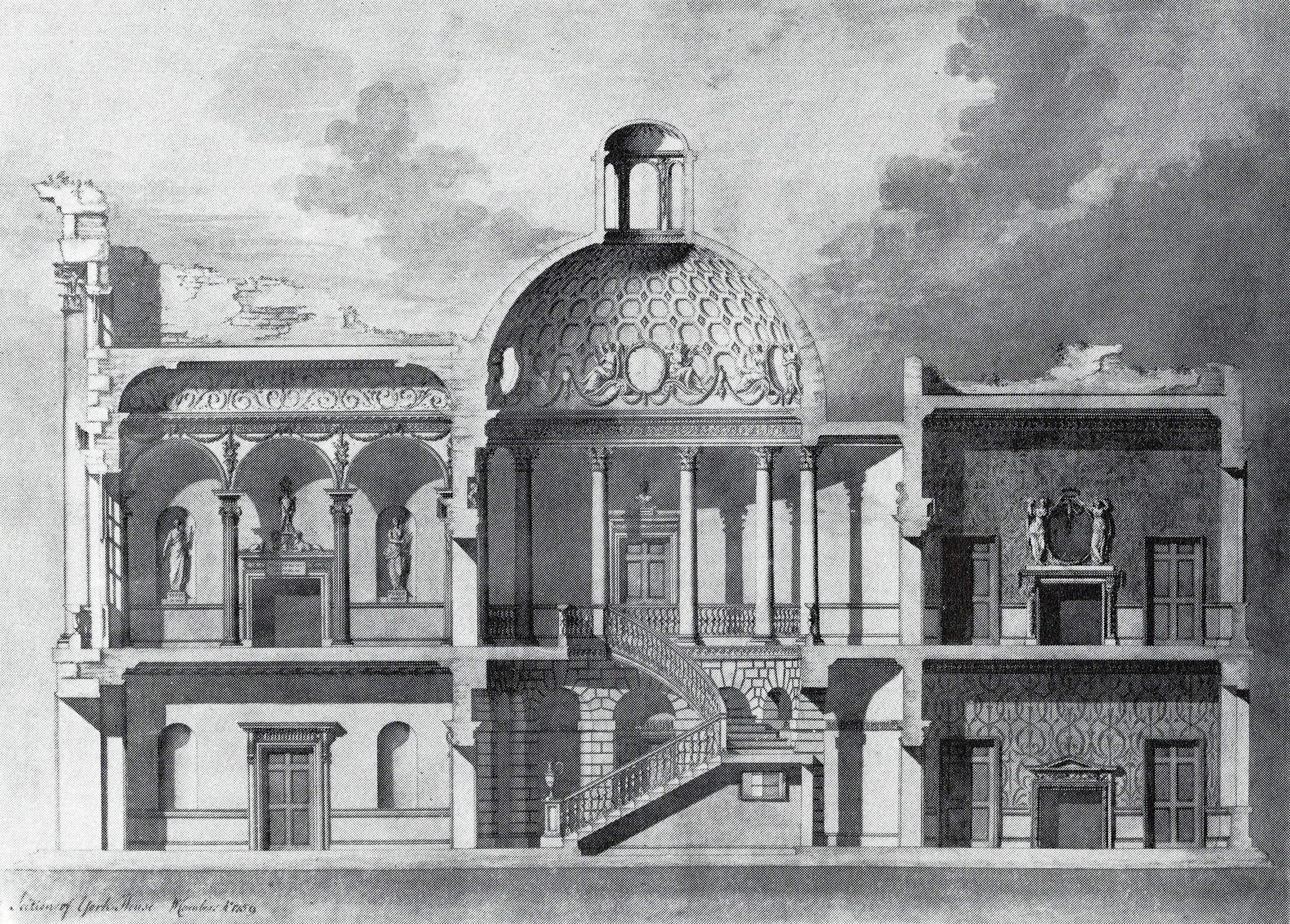Is my space too big?
Space has felt at a premium over the past 18 months.
Whether it's trying to find a corner in your home to do a zoom call in acoustic calm or searching for a home in splendid isolation, we are all familiar with this so-called ‘race for space’.
A section of the house designed by William Chambers for the Duke of York in 1759
Yet sometimes size doesn’t matter.
Sometimes we crave to get away from large spaces and it's the spatial variety, the options, we actually crave.
Here we list 13 goldilocks principles to make your space feel ‘just right.’
Big space is social space
In mediaeval times the great hall would be the place to gather, party, administrate and even sleep. These spaces were big cavernous halls and designed as the central point for social exchange. The largest space in your home is a natural gathering place so make sure you lean into its sociability.
There is nothing more impressive than welcoming visitors to a large space, see it as your ‘stage’ to awe your guests.Small space is for hiding
Think of a burrowing animal. In your home you need spaces where you can retreat and feel safe. To sleep, to read, to be on your own. A big space can make you feel exposed and trapped if you need that precious time to be undisturbed by others. Big spaces aren’t so good for feeling cosy as the ‘sphere of interference’ is harder to monitor.Play with ceiling heights & colours
Architectural features such as mezzanines, perimeter ledges, bay windows, and raised floor platforms bring dynamics to a big space. It makes the tall bits feel taller and provides corners of social restbite away from centre stage.Celebrate outside views.
Big space should interface with big views. And big juicy views. If a big space is about impressing visitors then the ultimate ‘show-off place’ is one with a rich vantage point of the outside. Trees, hills, water, townscape. This all stems from our human desire to be close to nature and be at an advantageous position to observe our immediate environment.Circulation space verses static space
No one wants to sit in a place where people are moving through constantly. Map your circulation routes in space - these should be efficient and not through static seating areas.Think acoustics & activities
Big spaces tend to echo in annoying ways. Prevent this by using soft surfaces on the floor and even on the ceiling (it is the up -down sound travel you are trying to soften). Screens and TVs are only good in big spaces for communal watching of films, sport, Eurovision etc - avoid the clash of multiple audio devices.Where is the sun?
Does your space get sunlight and when? Map this through the day and through the year. North facing rooflights can bring lift and cool daylight to a big space without giving too much glare. Flooding of sunshine is invigorating but only if you don’t need to sit in it for too long (sunglasses worn indoors is not cool).Artificial lighting to enhance
Different types of light bring different feelings to a space. Uplighting draws the eye to impressive ceiling heights, adding to the theatrical nature of a space. Table & floor lights define cosy seated zones. Down-lighters define functional activity stations.Features that bring flexibility
A Space A mantra is that a ‘living space’ is one that can be switched around. This is especially important in a big space. Perhaps you have summer and winter layouts. Perhaps you have a modular sofa that can be moved around. Make sure the elements in your big space are compatible with being moved for the ultimate feeling of freedom in your space.Dividers don’t have to be floor to ceiling walls
Get creative with dividing the space. Think permeable bookshelves, freestanding half walls with niches, semi-opaque walls, curtains, folding screens and large plants as semi barriers.Big rooms need big objects
Choose objects that are in proportion to the size of the space. Big art, big furniture, big mirrors, big lighting pendants. As Anna would say - don’t get stuff that looks like a “pea on a drum”. Make sure your stuff is curated in a way to draw the eye to focal zones and not clutter the edges with no hierarchy.Big rooms need big storage
Clutter gathers fast in a big space. And clutter is the enemy of a large room. Make sure you have generous storage solutions. Our favourite is wall to floor storage units. Remember furniture like ottomans, pouffes and banquettes offer great opportunities for hidden storage zones. Drawer space is great as stuff can be found easier when accessing from above (instead of rummaging through a cupboard).Use bold colour & pattern to enhance the drama
At Space A we think bold, purposeful moves using paint, tiles, fabric, wall coverings can be striking additions to add to the drama of a big space. It's important to register the pattern size & its repeat and consider from what distance it will be read and in what light.

